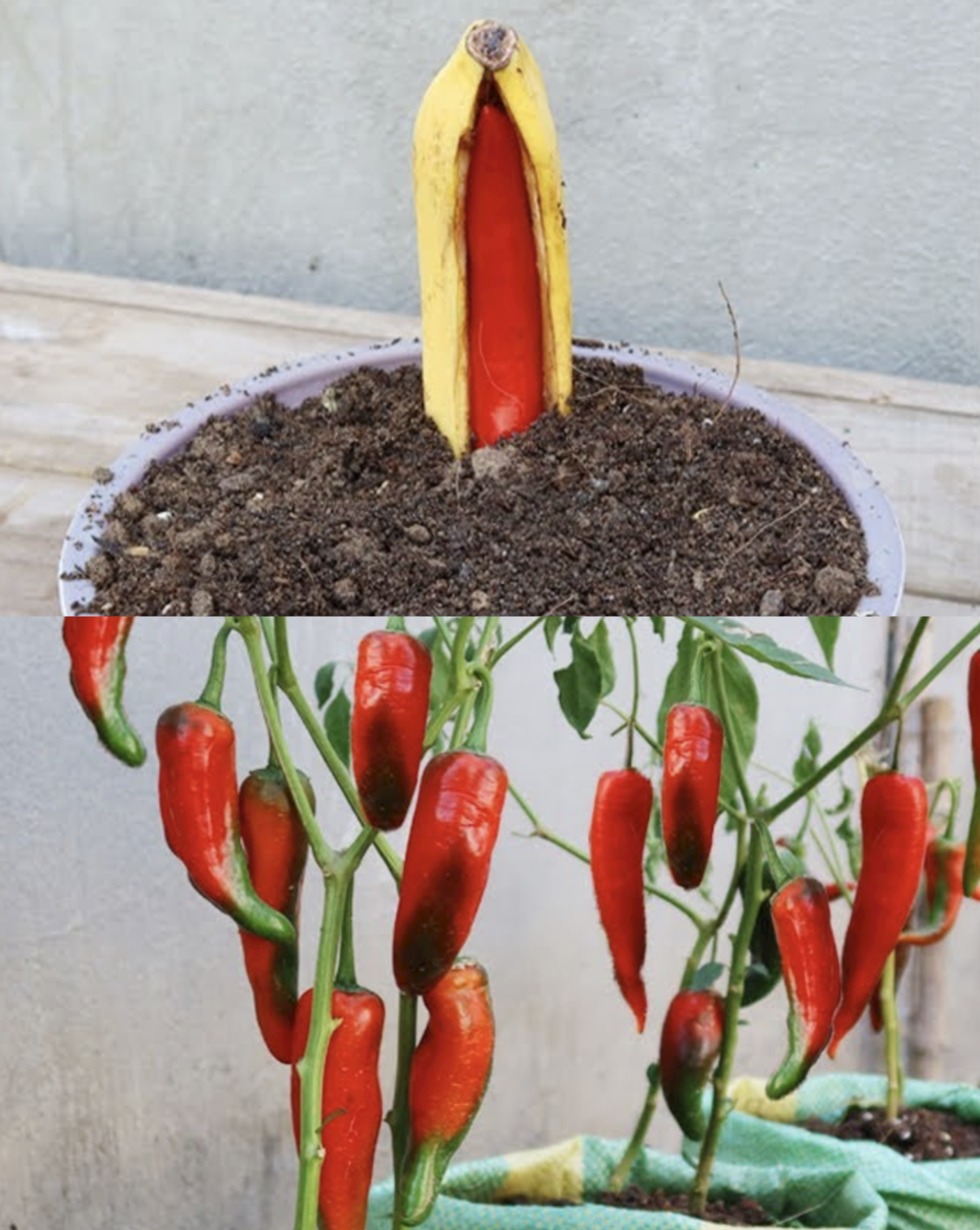Introduction:
The world of gardening is full of innovative and surprising methods that can enhance plant growth and productivity. One such intriguing technique is the propagation of chili peppers using bananas.
This method not only provides essential nutrients to the chili plants but also utilizes the natural properties of bananas to promote healthier growth. In this guide, we’ll walk through the steps of using bananas to propagate chili peppers, offering a unique and effective approach to gardening.
Step 1: Gather Your Supplies
Before you begin, ensure you have the following supplies:
- Ripe bananas
- Chili pepper seeds or seedlings
- Potting soil
- Pots or containers
- Watering can or system
- A sunny spot or grow lights
Step 2: Preparing the Soil
Choose a pot with good drainage and fill it with high-quality potting soil. The soil should be loose and fertile to allow for proper root development. If you’re using seeds, it’s ideal to start them in a smaller container or seed tray.
Step 3: Adding the Banana
Take a ripe banana and cut it into small pieces. Bury these pieces about 2-3 inches deep in the soil. Bananas are rich in potassium, phosphorus, and other nutrients, making them an excellent natural fertilizer.
Step 4: Planting the Seeds or Seedlings
If you’re starting with seeds, plant them just above the buried banana pieces, following the depth and spacing recommendations on the seed packet. For seedlings, gently remove them from their original container, ensuring the roots are intact, and place them in the pot over the banana pieces.
Step 5: Watering and Sunlight
Water the soil thoroughly after planting. Chili peppers require plenty of sunlight, so place the pots in a location where they can receive at least 6-8 hours of direct sunlight daily. If outdoor conditions aren’t suitable, use grow lights to provide the necessary light.
Step 6: Regular Care
Keep the soil consistently moist but not waterlogged. Monitor the growth and look out for signs of nutrient deficiency or pest infestations. As the plants grow, you might need to add support stakes to help them stay upright.
Step 7: Harvesting
In due course, your chili peppers will mature and be ready for harvest. The exact time will depend on the chili variety, but you’ll know they’re ready when they reach their full color and size.
Conclusion:
Propagating chili peppers in bananas is a fascinating and eco-friendly method to grow chilies. It’s a great conversation starter and a fun experiment in sustainable gardening. With these steps, even novice gardeners can enjoy the process of growing their own spicy treats in an innovative way.
Happy Gardening!





